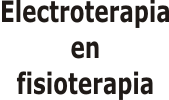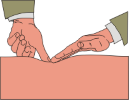 21/12/2025 00:39:07
21/12/2025 00:39:07
Answer on the use of power or intensity in ultrasound therapy
Question
"
. . . I know that you insist on calling W/cm2 power, but many authors consider that dividing the power of the head by the ARE goes from being called power in W to intensity in W/cm2.
Won't you have to revise your concepts?
"
Answer
Nice to answer you.
It is not the first time that I answer these questions, as you say, [https://www.iontoforesis.com/ultrason/intensidad-us.php], [https://www.electroterapia.com/intensidad-ultrasonoterapia.php], but I will continue to provide reasons.
Let's look at this example:
A grandfather distributes 20 walnuts equally among 4 grandchildren. Solution: Each grandson has received 5 balls.
Tell me if this makes sense.
1º.-- If the dividend is expressed in watts [W] throughout the head, the divisor is a distribution factor [cm2] (as in this case), the quotient must be watts, it cannot be potatoes, lettuce or intensity; but it can be called power density in [W/cm2]. It has to be power although it allows a surname or a qualifier. It is a simple arithmetic question.
The concept of pressure would be closer than that of intensity.
2º.-- On the other hand, Joule's Law says that power [W] times time [s] is equal to work [J].
In the case of the US, the power density [W/cm2] is multiplied by the real emission area [ERA or ARE] by the time [s] to obtain work [J]. It would be necessary to introduce the continuous or pulsed nuance, but let's not complicate the matter further.
If you insist on calling it intensity, someone may ask you what: with how many amps? since it is the unit of intensity.
3º.- Every machine that emits energy (of any type) to carry out a job has a greater or lesser capacity to carry it out, including electrotherapy by currents, because although they measure the intensity, they measure a part of the two by which the power is composed, which are the voltage and the intensity. The ability to do work in the unit of time is power, that is: the work done in 1 s.
The fact that we are used to referring only to intensity indicates that we lack parameters to consider and that we should speak of power to include the two fundamental parameters.
Since we are making mistakes with electrotherapy equipment, we do not transfer them to ultrasound equipment.
I think that we must avoid confusing concepts and nomenclatures, and above all, facilitate the handling and understanding of the technique. If we start from "strange" concepts, then we cannot presume that our work is scientific.
Suppose I ask you:
The power cord of the US equipment that you connect to the wall socket, what do you connect it to?
If you answered me that "in the light", I would tell you that light energy does not come through the cables, that you have to speak properly, not like the ignorant.
But if you told me that "to the electricity supply", it indicates that you know something about what you are talking about and that you do not confuse one energy with another, therefore, as a professional you can be reliable.
If you are not convinced by my answers, we can continue arguing.
Published on 07/14/2021
Ask again
"Professor, I have commented with sound specialists and they tell me that sound intensity does exist, and that it is the power between the surface."
Answer to the cross-question
The concept of sound intensity is a parameter or measure of sound reception and we are talking about a sound emitter (ultrasound in this case), which for some circumstances are not totally comparable.
Sound intensity is considered to be the received power per square meter [W/m2], coming from a sound source that emits in power expressed in watts [W]; and that the law of the square of distance is usually applied to it. In addition, the sound intensity has more to do with the pressure of the sound waves applied to the fluid, and with the speed of the fluid's particles.
As I explain in one of the links above, it is about imagining a sound source inside a sphere, whose source emits a sound in all directions with a certain power. The sound energy received in each spherical cap of one square meter is the sound intensity. The greater the distance between the sound source and the surface of the sphere, this energy will be reduced inversely as the square of the distance.
This sound intensity is measured with receivers (microphones for example). The US head is an emitter, and as such its emitted energy must be expressed in power [W] or [W/cm2 of the head]. Another thing would be if the ultrasonic energy that invades the tissues were measured from inside these, but as received. In this circumstance and considering the surface, we could agree.
I hope you are satisfied with my answer.
Posted on 07/28/2021







